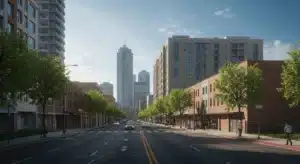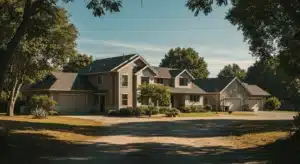
This post was last modified on August 28, 2025.
To excel as a local market expert, you must first grasp the nuances of neighborhood analysis. This means defining boundaries based on geographic features and community perceptions. But it doesn’t stop there; you’ll also need to assess key elements like property trends and crime rates. Understanding these factors can position you strategically in the marketplace. Yet, there’s more to mastering this skill than just crunching numbers. What other insights lie beneath the surface?
Defining Neighborhood Boundaries and Characteristics
When you consider defining neighborhood boundaries and characteristics, it becomes important to examine the geographic features that shape these areas.
Neighborhood features often include natural or man-made landmarks, such as streets, waterways, and legally recognized lines that help in boundary identification. You’ll find clear delineations based on cardinal directions, which can clarify where one neighborhood ends and another begins.
Additionally, local perceptions play a significant role; residents may have their own understanding of neighborhood limits. Factors like school district lines and nearby institutions also influence these boundaries.
When you analyze these elements, you gain valuable insights into the unique identity of each neighborhood, enhancing your overall understanding of the community’s characteristics. Moreover, understanding property surveys can provide precise measurements of land boundaries, ensuring accuracy in neighborhood definitions.
Key Elements to Analyze in Neighborhood Assessment
Understanding neighborhood boundaries and characteristics sets the stage for a thorough neighborhood assessment.
To become a local market expert, you must analyze key elements like property trends, identifying appreciation patterns and supply-demand balance. Review crime statistics to gauge safety, as perceptions of security can influence property values.
Assess school quality by evaluating ratings and community demographics, as strong educational institutions attract families. Don’t overlook local amenities; proximity to parks and shops enhances desirability.
Additionally, examine environmental risks and zoning regulations that may affect future development.
Finally, consider infrastructure development, including transportation access and utilities, to understand how these factors contribute to the neighborhood’s overall appeal and market dynamism. Understanding high demand in the California market can further refine your neighborhood analysis and enhance your expertise.
Practical Tips for Becoming a Local Market Expert Through Neighborhood Analysis
To excel as a local market expert, you need to adopt a strategic approach to neighborhood analysis that combines both quantitative data and qualitative insights.
Start by utilizing online data platforms like Zillow and Mashvisor for property trends and investment opportunities. Develop a systematic research workflow, focusing on safety, schools, and local amenities to gauge market potential.
Blend hard data with local insights gained through community engagement—attend events and interact with residents to understand the area’s unique culture.
Track market trends continuously, monitoring demographic shifts and economic indicators. Additionally, pay attention to market dynamics that influence buyer preferences and trends to enhance your understanding of the local landscape.
Finally, build a network of local real estate professionals for insider knowledge, enabling you to make informed decisions and stay ahead in the competitive real estate environment.
Frequently Asked Questions
How Can I Identify Gentrifying Neighborhoods Effectively?
To identify gentrifying neighborhoods effectively, analyze gentrification indicators like housing sales trends and demographic shifts, while actively engaging with the community to gather insights and perspectives that reveal underlying neighborhood changes.
What Tools Are Best for Neighborhood Data Visualization?
For neighborhood data visualization, consider using data mapping tools like Atlas.co and Maptive. These visualization software options provide interactive heat maps and detailed analytics, helping you understand market fluctuations and make informed decisions effectively.
How Do Zoning Laws Impact Neighborhood Characteristics?
Zoning regulations directly influence neighborhood development by dictating housing density and types. These laws shape demographics, affordability, and access to resources, often reinforcing segregation while either enabling or stifling inclusive community growth and economic mobility.
What Role Do Schools Play in Neighborhood Desirability?
Schools play a significant role in neighborhood desirability. Higher school ratings attract families and enhance community involvement, creating a stable environment. This connection often leads to increased property values and stronger social cohesion in the area.
How Can I Assess Crime Rates Within a Neighborhood?
To assess crime rates within a neighborhood, analyze crime statistics from police reports and victim surveys. Conduct safety assessments using spatial analysis tools to identify hotspots and trends, ensuring you capture the full picture of local safety.




